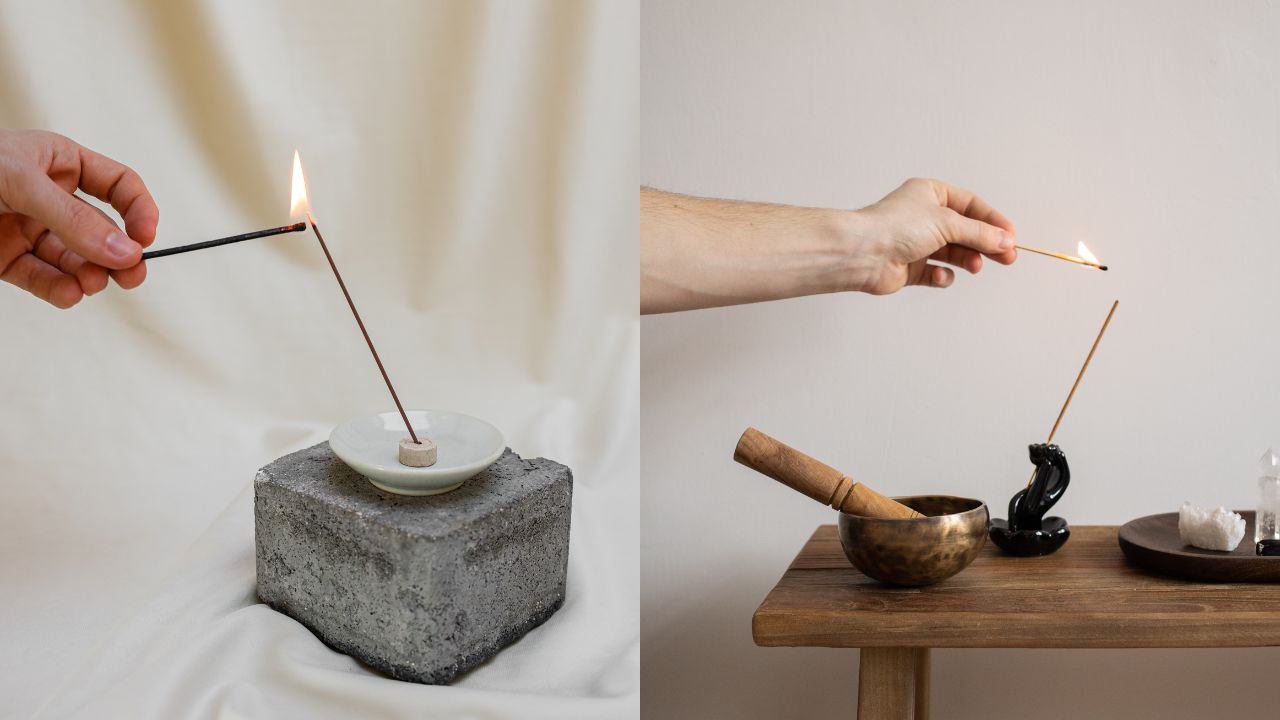The practice of using incense dates back hundreds of years for spiritual practices and meditation and relaxation purposes. The pleasant smell from incense creates a peaceful environment yet people must practice safe incense burning to avoid potential dangers. Proper best practice for how to light incense allows users to experience incense burning safely without any risks.
The Selection of Appropriate Incense Types and Burners
The selection of premium incense forms the basis for conducting a secure burning operation. Incense products exist in three forms: sticks, cones and resin which need dedicated burners for each category. Incense sticks and cones need holders that contain ash drops but resin incense needs a heat-proof dish and charcoal. The correct burner selection prevents fires from happening while maintaining uniform burning patterns.
Finding a Safe Location
Incense safety depends heavily on the appropriate placement of incense burners. The incense burner should sit on heat-resistant surfaces at a safe distance from all flammable objects such as curtains paper and furniture. The room requires proper ventilation to ensure the effective movement of smoke away from its area. Incense should never be positioned near an open window because draft conditions can spread embers which raises the risk of fire. The safe area around pets and children needs to remain unapproachable to prevent burns or ingestion incidents.
Lighting Incense Properly
To create a small flame from the incense tip, you should use a match or a lighter. Blowing gently on the flame permits the incense to produce a smoldering effect, which releases its scent. A second attempt at lighting the incense might be needed when it fails to generate continuous smoke. The lit end of the incense should not be touched directly because it stays hot until the burning process ends.
Monitoring the Burning Process
It is unsafe to leave burning incense unattended at any time. The placement of incense in a holder provides security but does not eliminate the risk of accidents that happen when embers drop, or the burner is accidentally knocked over. Checking the incense at regular intervals helps users to maintain proper burning and prevent safety hazards. To extinguish incense before its complete burn, you should use sand or a fireproof surface to press the lit end. Water dousing is an effective way to extinguish incense, but it produces additional smoke as a side effect.
Ensuring Proper Air Quality
The pleasant scents from incense cause respiratory problems when users release excessive smoke into the air. Open spaces serve as the proper location for burning incense to stop people from breathing in dangerous smoke levels that could affect their lung health. People who suffer from asthma or allergies combined with respiratory issues must limit their exposure to incense usage. The natural incense made from pure ingredients produces low smoke while improving air quality without diminishing the desired aromatic effect.
Properly Disposing of Ash and Used Incense
The incense-burning process should end when the entire stick has burned down, and users should wait for the ash to cool before getting rid of it. After they have cooled completely, the ashes should be placed inside a non-flammable container. People sometimes utilize incense ash in their gardening activities or spiritual ceremonies, yet they must dispose of it properly to avoid fire hazards.
Conclusion
The safe practice of burning incense demands proper attention to where it is placed the ventilation needs and continuous observation. People who follow recommended safety practices can experience incense relaxation without safety risks. The practice of responsible incense burning allows users to achieve better experiences while avoiding dangerous situations.
